Physically-Based Validation of
Deformable Medical Image Registration
Abstract
We propose a new approach for validating deformable image registration algorithms. Since difference images do not necessarily reflect the 3D correspondence of organs, we propose to use the deformation fields generated in our FEM-based simulations to assess the displacement resulted from other registration methods. Unlike traditional FEM-based registration methods, the boundary condition for the target organ is not given explicitly. Instead it is driven by inter-organ contact forces generated by boundary conditions on surrounding organs to reduce the uncertainty induced by geometry-based surface matching. To validate our system, real CT images of the male pelvis are analyzed, and the prostate can be reasonably registered without matching its surface to the image. Several registration methods are then evaluated using our system.
Results
Verification of Simulation
We apply a Dirichlet boundary condition on the rectum and the bladder to match their surfaces and perform the simulation. The average distance to the target organ (the prostate) decreased from 0.44 cm to 0.17 cm, and the standard deviation of the distance decreased from 0.24 cm to 0.08 cm.
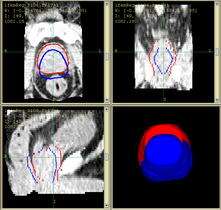 |
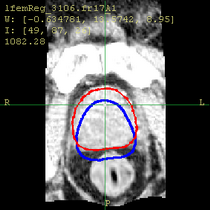 |
 |
| (a) | (b) | (c) |
(a, b) image deformed by our simulator; red contour: prostate in target image; blue contour: deformed prostate; (c) the resulting deformation. |
||
Validation of Deformation Fields
Two optical-flow-based methods, the Demons method and a level-set method implemented in ITK, and a physically-based method, the viscous fluid flow method, are evaluated.
 |
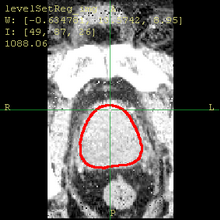 |
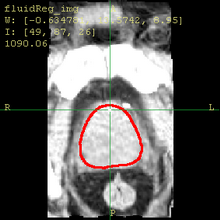 |
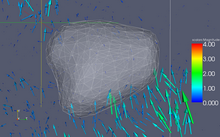 |
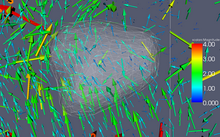 |
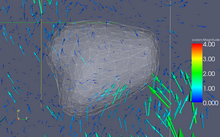 |
| (a) | (b) | (c) |
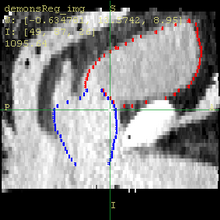 |
 |
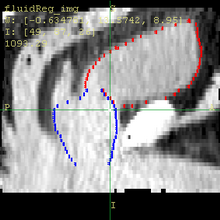 |
 |
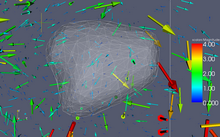 |
 |
| (d) | (e) | (f) |
(a-c) the results of the Demons, level-set, and fluid flow method in the first experiment; (d-f) the results of the three method in the second experiment. The first and third row: registered images; the second and fourth row: composed deformation field (lower values means more physically accurate) |
||
Publication
Huai-Ping Lee, Ming Lin, and Mark Foskey. Physically-Based validation of deformable medical image registration. Accepted by MICCAI 2008 (Lecture Notes in Computer Science). [pdf]
Acknowledgment
This work was supported in part by NCRR/NCI Grant R01 RR018615. We would also like to thank Army Research Office, National Science Foundation, and Intel for their support. We would like to thank Gregg Tracton for providing the CT images and the surface models of the organs for the experiments.